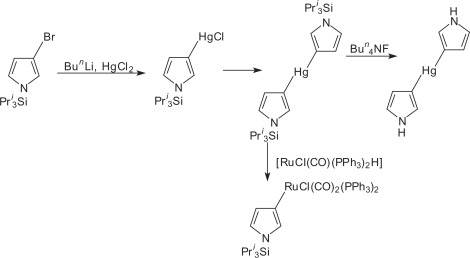
### A Significant Advancement in Synthetic Chemistry: **Photocatalytic Conversion of Furans to Pyrroles in One Step**
In a significant leap for synthetic organic chemistry, scientists in South Korea have introduced an innovative photocatalytic method to transform furans into pyrroles in a single, streamlined step. This advancement could greatly enhance the synthesis of heterocycles—chemical configurations with rings made up of at least two different types of atoms—which are crucial in the realm of drug discovery.
By providing a simpler approach to substitute oxygen atoms with nitrogen in these compounds, researchers aim to assist chemists in optimizing pharmacologically active substances more effectively, progressing the development of therapeutic agents.
### The Background: Replacing Atoms in Heterocycles
Furans and pyrroles are both five-membered heterocyclic structures that contain oxygen and nitrogen atoms, respectively. Minor modifications, such as swapping an oxygen atom for a nitrogen atom, can significantly influence how these compounds interact with their biological targets, making the ability to selectively replace these atoms extremely valuable in pharmaceuticals.
Nevertheless, current techniques for translating furans into pyrroles face considerable limitations, often necessitating extreme temperatures, intense UV light, or other severe conditions. These demands typically restrict the range of usable substrates—the variety of compounds applicable—and reduce overall yields.
‘Current approaches for this heterocycle conversion frequently entail rigorous conditions, like intense heat or UV irradiation, which restrict their use in complex organic synthesis due to low yields and limited substrate variety,’ explains **Mark Levin**, an organic chemist at the University of Chicago. Levin, who was not part of the team, further emphasizes that these obstacles have limited the broader applicability of such transformations in more intricate synthetic contexts, including late-stage drug modifications.
With the new photocatalytic method, researchers are tackling these challenges by offering a pathway under much gentler conditions, paving the way for innovations in drug design and various fields within synthetic chemistry.
### The Innovative Technique: Utilizing Light for Atom Replacement
The recent method was developed by a team led by **Yoonsu Park** at the Korea Advanced Institute of Science and Technology (KAIST) in Daejeon, South Korea, building on earlier studies from 1971 that demonstrated ultraviolet light could transform furan into N-propylpyrrole at a very low (3%) yield. That research confirmed the feasibility of nitrogen insertion but fell short of practical use.
Park’s team recognized the potential to achieve the same transformation more effectively by employing photocatalytic oxidation, utilizing a commercially available acridinium photocatalyst activated by blue light. **Photocatalysts** are substances that absorb light and facilitate the transfer of this energy to chemical reactants, instigating reactions that would generally need higher energy levels or more stringent conditions.
In this process, furan—a highly electron-rich compound—is oxidized under mild blue light, generating a chemically reactive radical species. This alteration disrupts the aromaticity of the ring—the inherent stability associated with delocalized electrons in certain cyclic structures. With this configuration temporarily destabilized, a primary amine is introduced into the mix. The amine reacts with the ring, prompting a molecular rearrangement resulting in an intermediate species containing both nitrogen and oxygen. Ultimately, the ring re-closes spontaneously, yielding a pyrrole, with water as the only byproduct.
### Advantages of the Photocatalytic Method
This innovative reaction pathway is noteworthy for several reasons, including its gentler reaction conditions and heightened efficiency. Crucially, it also facilitates easy modification of furan rings—structures found in naturally occurring medicinal compounds that are of significant interest to pharmaceutical chemists. These attributes make the conversion process much more feasible for both laboratory and industrial uses compared to existing methods.
‘[The new reaction] is distinguished as the first protocol allowing the direct conversion of furan to pyrrole under milder conditions, rendering it substantially more practical for a broader array of applications in synthetic chemistry,’ adds Levin.
The team also claims that their approach circumvents unwanted byproducts and adverse side reactions that often hinder similar atom-exchange transformations. The selectivity results in high yields even with electron-rich amines, a challenge faced by previous techniques.
### The Significance: Implications for Drug Discovery and More
Heterocyclic chemistry is fundamental to pharmaceutical advancements because heterocycles—rings composed of various atom types—frequently feature unique electronic properties that facilitate precise interactions with biological systems. Furans and pyrroles are particularly prevalent in many drug molecules for their capacity to function as versatile scaffolds, enabling meticulous control over drug-target interactions.
This newfound capability to effortlessly convert furans into pyrroles presents exciting opportunities in drug discovery. Chemists can now more readily adjust the “scaffold” molecules foundational to drug development, potentially enhancing efforts to refine drug properties.